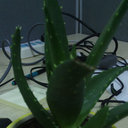[Analysis of influencing factors on circadian blood pressure of hypertensive patients with obstructive sleep apnea-hypopnea syndrome].
Từ khóa
trừu tượng
OBJECTIVE
To investigate the effect of obesity, arousal, hypoxia and sympathetic activation on the circadian blood pressure of hypertensive patients with obstructive sleep apnea-hypopnea syndrome.
METHODS
Polysomnography (PSG) was performed in 436 hypertensive patients complaining of snoring, daytime sleepiness, lips cyanosis, hyperhemoglobinemia of unknown etiology, or with refractory hypertension. Hypertensive subjects were divided into four groups according to apnea-hypopnea index (AHI): hypertensive with mild obstructive sleep apnea-hypopnea syndrome (OSAHS) (n = 131), hypertensive with moderate OSAHS (n = 95), hypertensive with severe OSAHS (n = 95) and hypertensive without OSAHS as control group (n = 115). The ambulatory blood pressure monitoring (ABPM), PSG, urine electrolyte, and urine vanillylmandelic acid (VMA) were compared among groups. Factor analysis was employed to identify common factors related to the alterations of circadian blood pressure. Multiple linear regression analysis was used to analyze the influencing factors of the observed variables.
RESULTS
There were significant differences among groups in age, neck circumference and waist circumference(P < 0.001). In severe group, 24 hour average systolic blood pressure (24 hSBP)[ (137.0 ± 16.8) mm Hg vs.(131.3 ± 11.9)mm Hg, (131.3 ± 13.2)mm Hg (1 mm Hg = 0.133 kPa)], daytime systolic blood pressure (day-SBP) [(140.8 ± 16.8) mm Hg vs. (135.7 ± 11.9) mm Hg, (135.3 ± 13.5) mm Hg]and night systolic blood pressure (night-SBP)[ (130.9 ± 17.0) mm Hg vs.(124.5 ± 14.0 )mm Hg, (124.3 ± 13.2) mm Hg] were significantly higher than those of control or mild OSAS groups (P < 0.01). Factor analysis showed that body mass (BM), life style, urine electrolyte, age and course of disease (ACD) were the common factors influencing circadian blood pressure. OSAHS was correlated with declining percentage of SBP (β = -0.128, P < 0.01) and declining percentage of DBP (β = -0.126, P < 0.01). The contribution according to priority was ACD > OSAHS > BM for declining percentage of SBP (β = -0.148, P = 0.002;β = -0.128, P = 0.007;β = 0.099, P = 0.035), OSAHS > ACD > BM for declining percentage of DBP(β = -0.126, P = 0.008;β = -0.105, P = 0.026;β = 0.097, P = 0.042).
CONCLUSIONS
OSAHS, ACD and BM are the independent risk factors contributing to the alterations of circadian blood pressure in hypertensive patients with obstructive sleep apnea-hypopnea syndrome.


